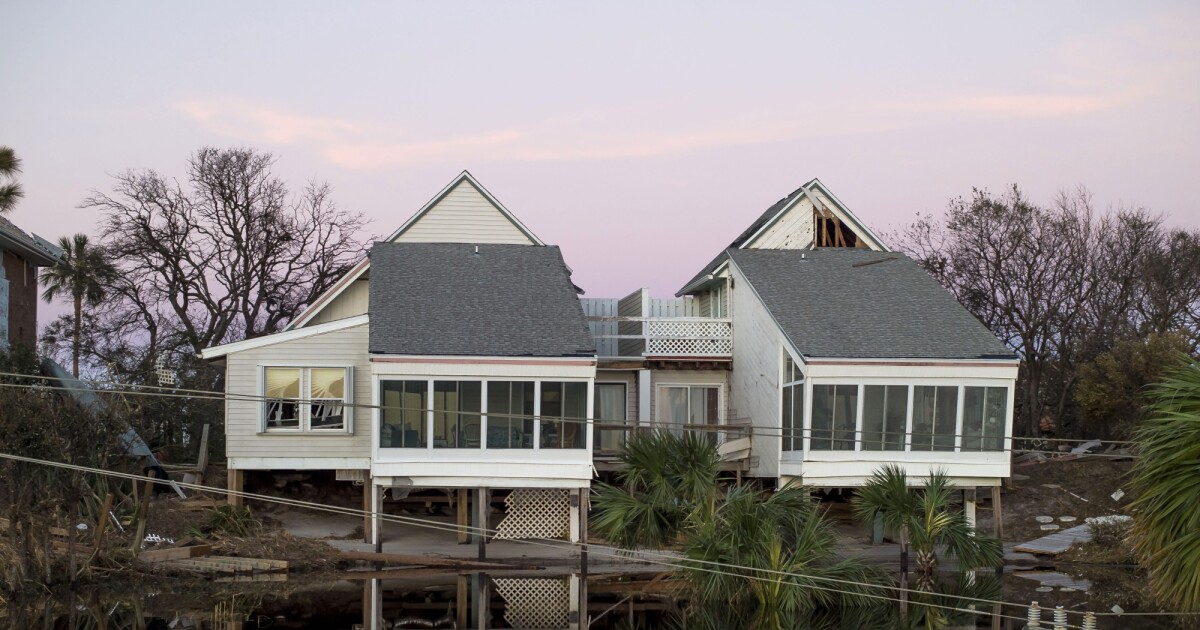
While the threat of property damage and associated monetary losses resulting from Atlantic hurricanes is well documented, a new study puts numbers on the extent of the risk to homeowners and their communities.
Climate scenarios are on the minds of home buyers,
"Buyers are factoring environmental risk factors into their decisions in ways we haven't seen before," said Cotality Chief Economist Selma Hepp in the report.
"They're pricing in insurance premiums, future storms and the potential for resale challenges. That's reshaping demand in coastal markets, even in areas with minimal storm history," she continued.
What are the costs from hurricane damage?
Across the Eastern U.S. the real estate data firm found more than 33.1 million properties from Maine to Texas with moderate or greater risk of damage from hurricane-force winds. The estimated reconstruction cost value for affected residences totals $11.7 trillion.
Coitality also found 6.4 million homes in the same affected area with at least a moderate risk of damage from storm-surge flooding, with reconstruction costs coming in at $2.2 trillion.
While attention often turns to the coast when the conversation turns to hurricanes, 2024's storms showed, the damage from storms can move well into inland markets. Winds and flooding during Hurricane Helene were responsible for extensive monetary losses and over 100 deaths in western North Carolina.
Thanks to strict building codes in Florida, due to its location in the eye of many storms, the Sunshine State managed to reduce hurricane damage. Still, repair costs still run into the billions.
Florida sits at the top of the list of states with the most homes at risk with 8.2 million and potential reconstruction costs of $2.3 trillion. Trailing by a significant margin is Texas with almost 4.8 million properties holding moderate or greater risk from climate damage that could result in $1.4 trillion worth of repairs.
Why disaster mitigation is important
Climate events play a large part in both driving property values down in some areas but can also push overall housing costs up for many homeowners.
Storm threats are leading residents of coastal communities to cities perceived as less risky and more affordable both within their state and elsewhere. A continuous exodus will bring housing values down, reducing the equity gains many homeowners spent years accruing and even lead some to
While values may fall in disaster-prone regions, insurance premiums will surge,
Even in safer locations, homeowners are seeing their properties lose value due to the cost of property and flood insurance or unavailability of them, the report said.
The effect on homeowners' financial health necessitates robust efforts to protect against damages, but recent policy moves are weakening previous standards. Earlier this year, the U.S. government
"This rollback comes as flooding — especially in coastal states like Florida — grows more frequent and severe due to environmental factors and urban development," said Chay Halbert, principal of public policy and industry relations at Cotality.
"Expanding development in flood-prone areas without maintaining or enhancing protection standards increases environmental and financial burdens for future generations," he concluded.
Tests to emergency management and property servicing networks in the face of hurricanes could come as soon as this summer
Recent Trump administration funding cuts that reduced staffing at NOAA as well as the Federal Emergency Management Agency will challenge storm forecasting and disaster-mitigation efforts as well as post-hurricane relief, many are predicting.



